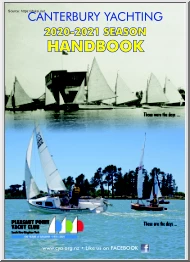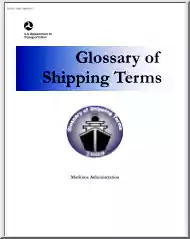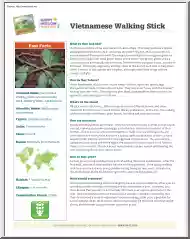Nincs még értékelés. Legyél Te az első!
Mit olvastak a többiek, ha ezzel végeztek?
Tartalmi kivonat
ENTERPRISE TUNING GUIDE The Enterprise is a relatively simple boat and most boats in the fleet have very similar boatspeed. Consequently any little edge in speed requires quite a lot of attention to small details. The aim of this guide is to enable you to set your boat up very close to the ideal settings so that you can be immediately ‘on the pace’. Spreader Settings There are two measurements for spreaders: Spreader Length and Spreader Deflection. Spreader Length affects the sideways stiffness of the mast and is taken by measuring the side wall of the mast to the shroud (A). Spreader Deflection controls the pre-bend in the mast and is measured by putting a straight edge from shroud to shroud and then measure to the mast from this edge (B). Spreader Length Spreader Deflection Superspar Proctor 410 171 420 171 Rig Tension Rig tension is measured on the shroud. Try to use the same tension guage each time and measure at the same height e.g eye level We sail with 400lbs in all
conditions Minor adjustments to the tension can be made by using a small chain plate on the end of the jib halyard instead of a shackel. Moving the pin up (decreasing the halyard length) will then increase the tension slightly. Mast Rake Mast rake is measured from the top of the mast to the top of the transom. It will vary slightly between boats but we sail with a rake in the range of 21’11 /2 – 21’2.To do this hoist the jib with 400lbs tension and then shackel a long measuring tape to main halyard. Measure 18’ 6 to the top of the black band at the gooseneck. Cleat the main halyard and measure to the transom This is the mast rake The half hole adjustments on the shroud chain plates change the mast rake by approximately ½ inch. Pre-Bend When you have the tension and rake set correctly, the final check to be made is the pre-bend. Pre-bend is controlled by angling the spreader tips forward and aft. Angling the tips aft increases the pre-bend by pushing the middle of the mast
forwards. We sail with a pre -bend of 1 inch which is measured by pulling the main halyard tight against the mast at the gooseneck. The distance between the halyard and the mast at spreader level is the pre-bend. The pre-bend can be adjusted without affecting your mast rake and tension settings. Jib Sheeting In medium and heavy airs the jib is pulled in as tightly as possible. A crease will appear across the foot of the jib.In very heavy winds the helm may need to help the crew to pull the jib in bar tight after each tack. In lighter breezes when the crew is no longer sitting on the side deck the jib should be eased ¼ inch. When the crew sits to leeward the jib should be eased ½ inch from tightly-in so that there is no longer any crease in the foot. Jib Fairleads These should initially be set so that if you follow the sheeting angle through the jib clew it will bisect the angle formed by the leech and foot. The fairleads can be moved back one hole on the track in winds above 15
knots. This increases the tension in the foot of the jib while freeing off the upper leech depowering the jib slightly. Below 8 knots the fairleads can be moved forward one hole Jib Sticks We carry 2 jibsticks, a running jib stick and a reaching jibstick. The running jibstick is maximum length and is used for goosewinging to present maximum sail area to the wind. The reaching jibstick is minimum length and is used when the jib is to leeward. When sailing with the reaching stick the jib should be overtrimmed so that the bottom leeward telltale is lifting. This keeps the upper part of the jib drawing. You will be unable to use the reaching stick on tight reaches Mainsail The mainsail should only be hoisted to the bottom of the black bank even though some ‘speed bump’ crease will be evident on the luff when sailing. Below 10 knots the mainsail should be ½ inch below the blackband (dropped one notch on the halyard rack) Kicking Strap This is the most critical control when racing.
In very light winds you should just take the slack out of the kicker when sailing upwind. As the wind increases however and the mast starts to bend you should aim to have the top leech telltale on the main flying approximately 80% of the time i.e occasionally flicking behind the mainsail. In these conditions it becomes critical to adjust the kicker as you sail into gusts or lulls. Above 15 knots the telltale will fly continuously The kicking strap then becomes a power control – if you are overpowered pull more on, if underpowered let some off. When sailing downwind you should aim to have the leech telltale flying continuously. If you find that you cannot pull enough kicker on when sailing upwind i.e the lower cascade block touches the double block on the floor, move the pin on the kingpost chainplate down one hole. Conversely if you cannot let off enough kicker on a run (top cascade block touches the boom) move the pin up a hole. Cunningham The cunningham is only used in an
Enterprise when sailing upwind in 15 knots and above. In these conditions it can be used to remove some of the crease that are appearing on the main luff. Do not remove the creases completely however and do not use the cunningham downwind. The cunningham should never be pulled on bar tight. Outhaul When sailing upwind the outhaul should be pulled out to the blackband in all conditions except for a drifter when it can be eased ¼ inch. On the reaches the outhaul should be eased 11 /2 – 2 inches where as on a run it should only be eased ½ inch to keep maximum sail area to the wind. If you have any questions or problems please do not hesitate to contact Speed Sails at (0)1922 455503
conditions Minor adjustments to the tension can be made by using a small chain plate on the end of the jib halyard instead of a shackel. Moving the pin up (decreasing the halyard length) will then increase the tension slightly. Mast Rake Mast rake is measured from the top of the mast to the top of the transom. It will vary slightly between boats but we sail with a rake in the range of 21’11 /2 – 21’2.To do this hoist the jib with 400lbs tension and then shackel a long measuring tape to main halyard. Measure 18’ 6 to the top of the black band at the gooseneck. Cleat the main halyard and measure to the transom This is the mast rake The half hole adjustments on the shroud chain plates change the mast rake by approximately ½ inch. Pre-Bend When you have the tension and rake set correctly, the final check to be made is the pre-bend. Pre-bend is controlled by angling the spreader tips forward and aft. Angling the tips aft increases the pre-bend by pushing the middle of the mast
forwards. We sail with a pre -bend of 1 inch which is measured by pulling the main halyard tight against the mast at the gooseneck. The distance between the halyard and the mast at spreader level is the pre-bend. The pre-bend can be adjusted without affecting your mast rake and tension settings. Jib Sheeting In medium and heavy airs the jib is pulled in as tightly as possible. A crease will appear across the foot of the jib.In very heavy winds the helm may need to help the crew to pull the jib in bar tight after each tack. In lighter breezes when the crew is no longer sitting on the side deck the jib should be eased ¼ inch. When the crew sits to leeward the jib should be eased ½ inch from tightly-in so that there is no longer any crease in the foot. Jib Fairleads These should initially be set so that if you follow the sheeting angle through the jib clew it will bisect the angle formed by the leech and foot. The fairleads can be moved back one hole on the track in winds above 15
knots. This increases the tension in the foot of the jib while freeing off the upper leech depowering the jib slightly. Below 8 knots the fairleads can be moved forward one hole Jib Sticks We carry 2 jibsticks, a running jib stick and a reaching jibstick. The running jibstick is maximum length and is used for goosewinging to present maximum sail area to the wind. The reaching jibstick is minimum length and is used when the jib is to leeward. When sailing with the reaching stick the jib should be overtrimmed so that the bottom leeward telltale is lifting. This keeps the upper part of the jib drawing. You will be unable to use the reaching stick on tight reaches Mainsail The mainsail should only be hoisted to the bottom of the black bank even though some ‘speed bump’ crease will be evident on the luff when sailing. Below 10 knots the mainsail should be ½ inch below the blackband (dropped one notch on the halyard rack) Kicking Strap This is the most critical control when racing.
In very light winds you should just take the slack out of the kicker when sailing upwind. As the wind increases however and the mast starts to bend you should aim to have the top leech telltale on the main flying approximately 80% of the time i.e occasionally flicking behind the mainsail. In these conditions it becomes critical to adjust the kicker as you sail into gusts or lulls. Above 15 knots the telltale will fly continuously The kicking strap then becomes a power control – if you are overpowered pull more on, if underpowered let some off. When sailing downwind you should aim to have the leech telltale flying continuously. If you find that you cannot pull enough kicker on when sailing upwind i.e the lower cascade block touches the double block on the floor, move the pin on the kingpost chainplate down one hole. Conversely if you cannot let off enough kicker on a run (top cascade block touches the boom) move the pin up a hole. Cunningham The cunningham is only used in an
Enterprise when sailing upwind in 15 knots and above. In these conditions it can be used to remove some of the crease that are appearing on the main luff. Do not remove the creases completely however and do not use the cunningham downwind. The cunningham should never be pulled on bar tight. Outhaul When sailing upwind the outhaul should be pulled out to the blackband in all conditions except for a drifter when it can be eased ¼ inch. On the reaches the outhaul should be eased 11 /2 – 2 inches where as on a run it should only be eased ½ inch to keep maximum sail area to the wind. If you have any questions or problems please do not hesitate to contact Speed Sails at (0)1922 455503




 Ahogy közeledik a történelem érettségi, sokan döbbennek rá, hogy nem készültek fel eléggé az esszéírás feladatra. Módszertani útmutatónkban kitérünk a történet térbeli és időbeli elhelyezésére, a források elemzésére és az eseményeket alakító tényezőkre is.
Ahogy közeledik a történelem érettségi, sokan döbbennek rá, hogy nem készültek fel eléggé az esszéírás feladatra. Módszertani útmutatónkban kitérünk a történet térbeli és időbeli elhelyezésére, a források elemzésére és az eseményeket alakító tényezőkre is.